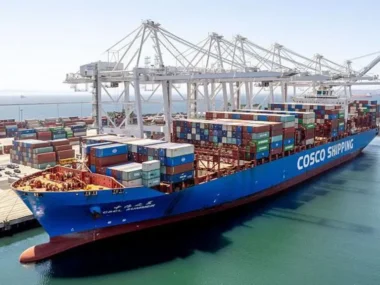After initial gains on a tighter supply forecast and volatile trading on Monday, oil prices moved lower as Russia lifted its fuel embargo, but investors watched high interest rates that could reduce demand.
By 10:33 a.m. EDT (1433 GMT), Brent crude futures were down 30 cents at $92.97 per barrel.
At $89.45, U.S. West Texas Intermediate crude had decreased by 58 cents.
According to a government document released on Monday, Russia has approved several adjustments to its ban on the export of fuel, including the relaxation of the restrictions on diesel with a high sulphur content and petroleum used as bunkering for particular vessels.
All forms of gasoline and premium diesel are still prohibited, as announced last Thursday.
With the Fed’s hawkish message that interest rates would remain higher for longer, the market is still processing Russia’s temporary ban on the export of diesel and gasoline into an already constrained market, according to IG Markets analyst Tony Sycamore.
Last week, crude prices dropped as a hawkish Federal Reserve shook up the world’s financial markets and prompted worries about the demand for oil. After Saudi Arabia and Russia curtailed supplies by extending production cutbacks through the end of the year, that ended a three-week rise of more than 10%.
In an effort to stabilize the domestic market, Moscow temporarily banned the shipment of gasoline and diesel to the majority of nations last week, stoking fears of a shortage of goods as the Northern Hemisphere enters winter.
The U.S. dollar index rose on Monday to its highest level since November 2022, which also weighed on oil prices. Oil priced in U.S. dollars becomes more expensive for owners of other currencies, reducing demand.
Because of the dollar’s surge, we “seem to have a risk-off sentiment,” according to Price Futures Group analyst Phil Flynn.
Despite increased prices, the number of working oil rigs in the United States dropped by eight to 507 last week, the lowest number since February 2022, according to a Baker Hughes weekly report released on Friday.
The availability of refining capacity will be reduced by 324,000 barrels per day (bpd) for the week ending September 29, according to research firm IIR Energy, which would further exacerbate supply shortages.
The week ending October 6 is projected to see an increase in offline capacity to 1.9 million bpd, according to IIR.
According to the official IRNA news agency, a gas leak on Monday resulted in an explosion at Iran’s southern refinery in Bandar Abbas.
The world’s top importer of crude oil, China, is expected to release better economic data this week, which improved optimism. Analysts cautioned, however, that technical resistance exists at the recent highs for November 2022 for oil prices.
According to Goldman Sachs analysts, China’s manufacturing sector is anticipated to grow in September, with the buying manufacturing index predicted to surpass 50 for the first time since March.











